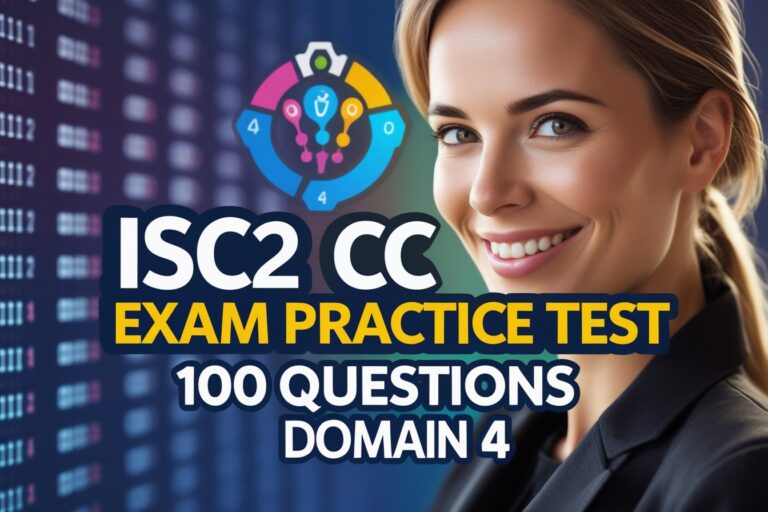1) In memory management, a technique called paging, the physical memory is broken into fixed-sized blocks called ………
A. pages
B. frames
C. blocks
D. segments
2) Which method is used to recover from deadlock?
A. Process termination
B. Resource preemption
C. Resource restart
D. Process termination and Resource preemption
3) Saving the state of the old process and loading the saved state of the new process is called…
A. context switch
B. static
C. multiprogramming
D. none of the above
4) The degree of Multiprogramming is controlled by ……
A. CPU scheduler
B. context switching
C. long term scheduler
D. medium-term scheduler
5) Input transfers are done in advance and output transfers are done after sometimes in which of these techniques?
A. Spooling
B. Buffering
C. Swapping
D. Paging
Read Also: MCQ on Fundamental Of Process Management In OS Part-1
6) A binary semaphore ………
A. has the values one or zero
B. is essential to binary computers
C. is used only for synchronization
D. is used only for mutual exclusion
7) A scheduling algorithm is fair …….
A. if no process faces starvation.
B. if a process is starved, detect it and run it with high priority
C. if it uses semaphores
D. only if a queue is used for scheduling
8) Which of the following is also known as Double buffering?
A. anticipated buffering
B. buffer swapping
C. circular buffering
D. swapping buffering
9) ………. is the ability of a system to continue functioning in the event of partial system failure.
A. fault avoidance
B. fault tolerance
C. fault detection
D. fault recovery
10) Virtual memory is ………
A. an extremely large main memory
B. an extremely large secondary memory
C. an illusion of an extremely large main memory
D. a type of memory used in supercomputers
Read Also: Objective Questions On Memory Management In OS Part-2
11) Error handling and I/O interrupt handling are the functions of ……
A. I/O Device Handler
B. I/O traffic controller
C. I/O scheduler
D. I/O buffer
12) In a multi-threaded environment……….
A. each thread is allocated with new memory from the main memory
B. main thread terminates after the termination of child threads
C. every process can have only one thread
D. none of the above
13) The kernel keeps track of the state of each task by using a data structure called ……
A. process control block
B. user control block
C. memory control block
D. hardware control block
14) A virtual device is a ……….
A. dedicated for no purpose
B. shared device converted to a dedicated device
C. dedicated device converted to a shared device
D. shared device
15) CPU scheduling is the basis of ………..operating system.
A. batch
B. real-time
C. multiprogramming
D. monoprogramming
Read Also: Top 30 MCQ Questions On Uniprocessor Scheduling In OS
16) ……… is a high-speed cache used to hold recently referenced page table entries as a part of paged virtual memory.
A. Translation looks like a side buffer
B. Inverse page table
C. Segmented page table
D. Indexed page table
17) A technique that smooths out peaks in I/O demand is ……..
A. spooling
B. buffering
C. swapping
D. paging
18) In the kernel model, the operating system services such as process management, and memory management are provided by the kernel.
A. monolithic
B. micro
C. macro
D. Complex
19) A process is said to be in ……….. state if it was waiting for an event that will never occur.
A. safe
B. unsafe
C. starvation
D. deadlock
20) Which of the following is an example of a spooled device?
A. The terminal used to enter the input data for a program being executed
B. The secondary memory device in a virtual memory system
C. A line printer used to print the output of a number of jobs
D. None of the above
Answers:
1) B. frames
2) D. Process termination and Resource preemption
3) A. context switch
4) C. long term scheduler
5) B. Buffering
6) A. has the values one or zero
7) A. if no process faces starvation
8) B. buffer swapping
9) B. fault tolerance
10) C. an illusion of an extremely large main memory
11) A. I/O Device Handler
12) B. main thread terminates after the termination of child threads
13) A. process control block
14) B. shared device converted to a dedicated device
15) C. multiprogramming
16) A. Translation looks like a side buffer
17) B. buffering
18) A. monolithic
19) D. deadlock
20) C. A line printer is used to print the output of a number of jobs
Read Next: Top 20 MCQ On I/O Management And Disk Scheduling
Read More: Collection of MCQ Questions on Operating System









